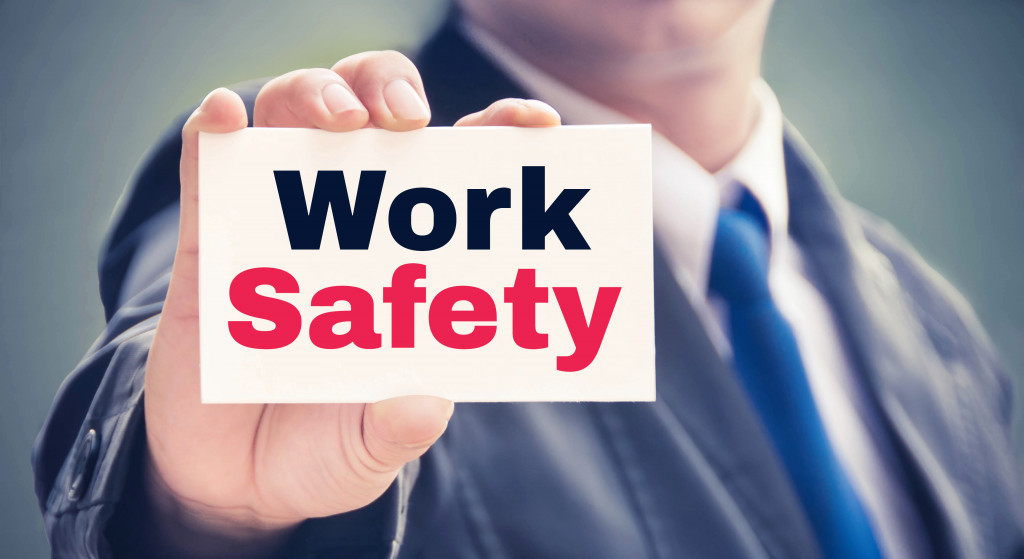To say that the coronavirus pandemic changed the whole world as people knew it would be the understatement of the millennium. Not only did it force people indoors for the better part of a year, but it also transitioned most face-to-face and physical interactions onto the digital landscape.
Students, teachers, and employees alike have all had to conduct their day-to-day activities through the internet for the past year and a half. Working remotely was the answer to everyone’s question about how they could still operate despite the current situation. And most people quickly adapted to their circumstances.
However, since many people are already vaccinated and the rate of infection is coming down, many businesses and schools have started to reopen. So if your company is among the many that have begun to return to some semblance of normalcy, here are some ways you can maintain the safety of your workplace:
Virus Testing
Unless your line of work has you constantly interacting with clients and customers or coming into contact with food products, you might not need to test for the virus as often as you think. But if it can make you and your employees more at ease, you should conduct rapid COVID-19 tests at least once every two weeks, or more if someone comes into close contact.
This is not only the responsible thing to do, but it can also put your worries and doubts to rest. Plus, it can make your employees more confident when meeting your clients or customers because they’ll know that they’re not transmitting potentially lethal virus strain to other people without their knowledge.
Disinfection
You may have already been maintaining your workplace regularly even before the pandemic began, but now, there’s more urgency in the task. This is especially true for common surfaces that can be touched by many people, such as counters, tables, elevators, pantry areas, bathrooms, and other public places.
Make it a point to disinfect these surfaces frequently throughout the day to reduce the possibility of transmitting the virus. It could also bode well for you to place air purifiers strategically all over the workplace to kill any airborne particles that may be lingering. This way, you can make sure that everyone inside the workplace can remain safe.
Social Distancing
Even if everyone in your workplace is already fully vaccinated, there’s nothing wrong with practicing social distancing, particularly in tight spaces. There’s still a possibility of contracting the virus even when you’re fully vaccinated, and if you get infected, there’s a chance that you can pass that on to other people.
That’s why you have to make sure that you’re not crowding 15 people in a meeting room that can only accommodate five. There are plenty of online videoconferencing platforms and collaboration tools that you can use to accomplish your tasks, so use them. If you have other options aside from face-to-face interactions, consider opting for them.
Vaccination
Of course, you can’t force your employees to get vaccinated against their will, but you can encourage them to get their shots. Vaccines can be complex, especially if people don’t take the time to understand why it’s important and how it can benefit them or society as a whole. So, take it upon yourself to raise awareness inside your workplace.
You can do this by holding a seminar on vaccine hesitancy to address the issues that your employees might have about vaccines and what’s holding them back from getting vaccinated. Plus, you can even invite a healthcare worker or an advocate to talk to your employees and urge them to get vaccinated as soon as possible.
Masks

Although most people would want to be rid of face masks for good, it could be a good idea to practice wearing them inside the office, especially if you’re in an enclosed room. The chance of transmitting the virus is higher in rooms with poor ventilation, so you should allow your employees to wear masks if it makes them more comfortable.
Of course, it’s different in every workplace environment. What may work for one company may not work for you. That’s why it’s important to create guidelines based on what your business needs. But there are also common workplace safety protocols that you can follow if you don’t know how to get started.
Since you’re managing your employees, it’s your job to ensure that they can work in a safe environment that’s conducive to working. You can’t force them to come back to the office and act as if the pandemic isn’t happening because it is. Don’t put your employees’ lives in danger by being stubborn about the guidelines. Instead, you should be the one leading them so your employees will follow suit.



